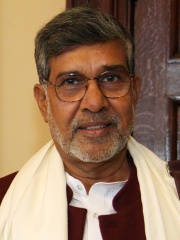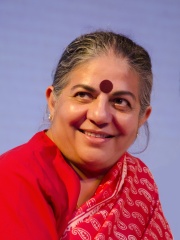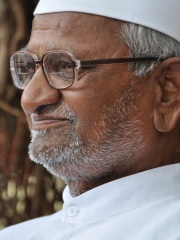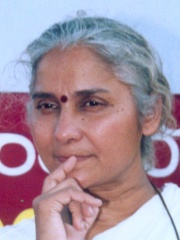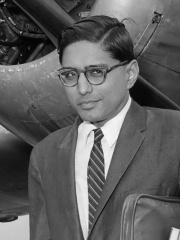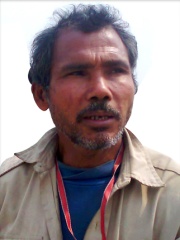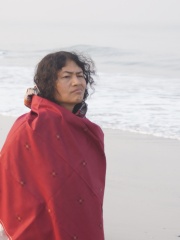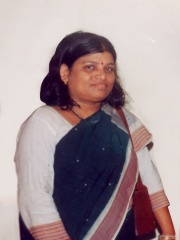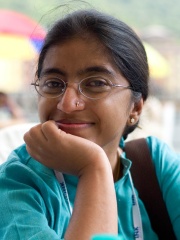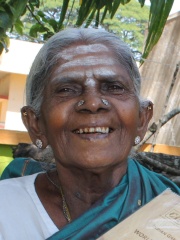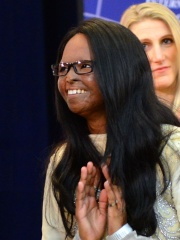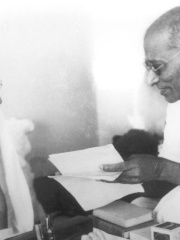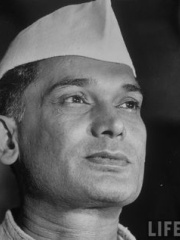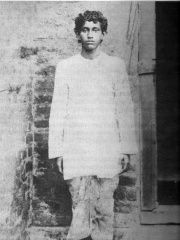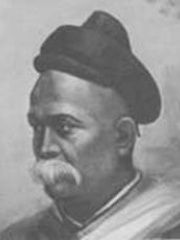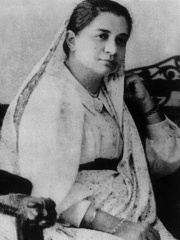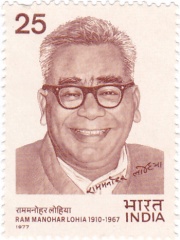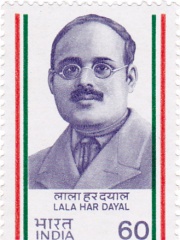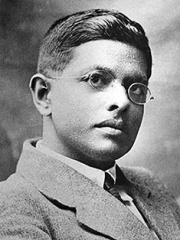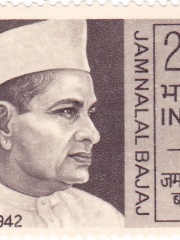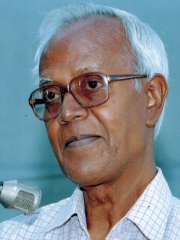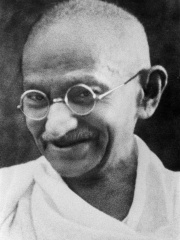
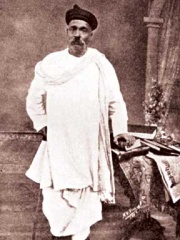
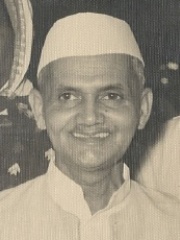
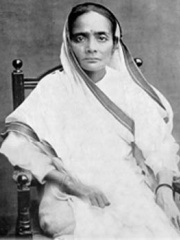
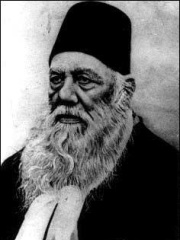
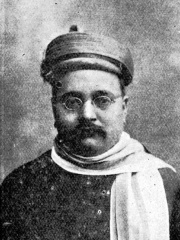
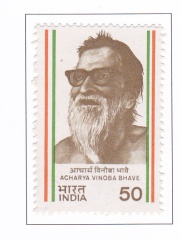
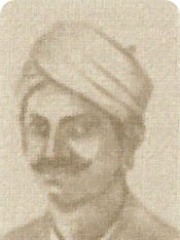
The Most Famous
SOCIAL ACTIVISTS from India
This page contains a list of the greatest Indian Social Activists. The pantheon dataset contains 538 Social Activists, 50 of which were born in India. This makes India the birth place of the 2nd most number of Social Activists.
Top 10
The following people are considered by Pantheon to be the top 10 most legendary Indian Social Activists of all time. This list of famous Indian Social Activists is sorted by HPI (Historical Popularity Index), a metric that aggregates information on a biography’s online popularity. Visit the rankings page to view the entire list of Indian Social Activists.

1. Mahatma Gandhi (1869 - 1948)
With an HPI of 88.49, Mahatma Gandhi is the most famous Indian Social Activist. His biography has been translated into 188 different languages on wikipedia.
Mohandas Karamchand Gandhi (ISO: Mōhanadāsa Karamacaṁda Gāṁdhī; 2 October 1869 – 30 January 1948) was an Indian lawyer, anti-colonial nationalist and political ethicist who employed nonviolent resistance to lead the successful campaign for India's independence from British rule. He inspired movements for civil rights and freedom across the world. The honorific Mahātmā (from Sanskrit 'great-souled, venerable'), first applied to him in South Africa in 1914, is now used throughout the world. Born and raised in a Hindu family in coastal Gujarat, Gandhi trained in the law at the Inner Temple in London, and was called to the bar in June 1891, at the age of 22. After two uncertain years in India, where he was unable to start a successful law practice, he moved to South Africa in 1893 to represent an Indian merchant in a lawsuit. He went on to live in South Africa for 21 years. There, Gandhi raised a family and first employed nonviolent resistance in a campaign for civil rights. In 1915, aged 45, he returned to India and soon set about organising peasants, farmers, and urban labourers to protest against discrimination and excessive land-tax. Assuming leadership of the Indian National Congress in 1921, Gandhi led nationwide campaigns for easing poverty, expanding women's rights, building religious and ethnic amity, ending untouchability, and, above all, achieving swaraj or self-rule. Gandhi adopted the short dhoti woven with hand-spun yarn as a mark of identification with India's rural poor. He began to live in a self-sufficient residential community, to eat simple food, and undertake long fasts as a means of both introspection and political protest. Bringing anti-colonial nationalism to the common Indians, Gandhi led them in challenging the British-imposed salt tax with the 400 km (250 mi) Dandi Salt March in 1930 and in calling for the British to quit India in 1942. He was imprisoned many times and for many years in both South Africa and India. Gandhi's vision of an independent India based on religious pluralism was challenged in the early 1940s by a Muslim nationalism which demanded a separate homeland for Muslims within British India. In August 1947, Britain granted independence, but the British Indian Empire was partitioned into two dominions, a Hindu-majority India and a Muslim-majority Pakistan. As many displaced Hindus, Muslims, and Sikhs made their way to their new lands, religious violence broke out, especially in the Punjab and Bengal. Abstaining from the official celebration of independence, Gandhi visited the affected areas, attempting to alleviate distress. In the months following, he undertook several hunger strikes to stop the religious violence. The last of these was begun in Delhi on 12 January 1948, when he was 78. The belief that Gandhi had been too resolute in his defence of both Pakistan and Indian Muslims spread among some Hindus in India. Among these was Nathuram Godse, a militant Hindu nationalist from Pune, western India, who assassinated Gandhi by firing three bullets into his chest at an interfaith prayer meeting in Delhi on 30 January 1948. Gandhi's birthday, 2 October, is commemorated in India as Gandhi Jayanti, a national holiday, and worldwide as the International Day of Nonviolence. Gandhi is considered to be the Father of the Nation in post-colonial India. During India's nationalist movement and in several decades immediately after, he was also commonly called Bapu (Gujarati endearment for "father", roughly "papa", "daddy").

2. Bal Gangadhar Tilak (1856 - 1920)
With an HPI of 66.89, Bal Gangadhar Tilak is the 2nd most famous Indian Social Activist. His biography has been translated into 47 different languages.
Bal Gangadhar Tilak (; born Keshav Gangadhar Tilak (pronunciation: [keʃəʋ ɡəŋɡaːd̪ʱəɾ ʈiɭək]); 23 July 1856 – 1 August 1920), endeared as Lokmanya (IAST: Lokamānya), was an Indian nationalist, teacher, and an independence activist. He was one third of the Lal Bal Pal triumvirate. The British colonial authorities called him "The father of the Indian unrest". He was also conferred with the title of "Lokmanya", which means "accepted by the people as their leader". Mahatma Gandhi called him "The Maker of Modern India".Tilak was one of the first and strongest advocates of Swaraj ('self-rule') and a strong radical in Indian consciousness. He is known for his quote in Marathi: "Swaraj is my birthright and I shall have it!". He formed a close alliance with many Indian National Congress leaders including Bipin Chandra Pal, Lala Lajpat Rai, Aurobindo Ghose, V. O. Chidambaram Pillai and Muhammad Ali Jinnah.

3. Lal Bahadur Shastri (1904 - 1966)
With an HPI of 65.45, Lal Bahadur Shastri is the 3rd most famous Indian Social Activist. His biography has been translated into 62 different languages.
Lal Bahadur Shastri (pronounced [lɑːl bəˈhɑːd̪ʊɾ ˈʃɑːst̪ɾi] ; born as Lal Bahadur Srivastava; 2 October 1904 – 11 January 1966) was an Indian politician and statesman who served as the second prime minister of India from 1964 to 1966. He previously served as the sixth home minister of India from 1961 to 1963. Shastri was born to Sharad Prasad Srivastava and Ramdulari Devi in Mughalsarai on 2 October 1904. He studied in East Central Railway Inter college and Harish Chandra High School, which he left to join the non-cooperation movement. He worked for the betterment of the Harijans at Muzaffarpur and dropped his caste-derived surname of "Srivastava". Shastri's thoughts were influenced by reading about Swami Vivekananda, Mahatma Gandhi and Annie Besant. Deeply impressed and influenced by Gandhi, he joined the Indian Independence movement in the 1920s. He served as the president of Servants of the People Society (Lok Sevak Mandal), founded by Lala Lajpat Rai and held prominent positions in the Indian National Congress. Following independence in 1947, he joined the Indian government and became one of Prime Minister Nehru's key cabinet colleagues, first as Railways Minister (1951–56), and then in numerous other prominent positions, including the Home Minister. As prime minister, Shastri promoted the White Revolution – a national campaign to increase the production and supply of milk – by supporting the Amul milk co-operative of Anand, Gujarat and creating the National Dairy Development Board. Underlining the need to boost India's food production, Shastri also promoted the Green Revolution in India in 1965. This led to an increase in food grain production, especially in the states of Punjab, Haryana and Uttar Pradesh. He led the country during the Second India–Pakistan War. His slogan "Jai Jawan, Jai Kisan" ("Hail to the soldier; Hail to the farmer") became very popular during the war. The war formally ended with the Tashkent Declaration on 10 January 1966; Shastri died the next day.

4. Kasturba Gandhi (1869 - 1944)
With an HPI of 65.21, Kasturba Gandhi is the 4th most famous Indian Social Activist. Her biography has been translated into 37 different languages.
Kasturbai Mohandas Gandhi (, born Kasturbai Gokuldas Kapadia; 11 April 1869 – 22 February 1944) was an Indian political activist who was involved in the Indian independence movement during British India. She was married to Mohandas Gandhi, commonly known as Mahatma Gandhi. National Safe Motherhood Day is observed in India annually on April 11, coinciding with Kasturba's birthday.
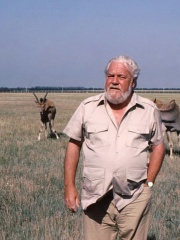
5. Gerald Durrell (1925 - 1995)
With an HPI of 63.42, Gerald Durrell is the 5th most famous Indian Social Activist. His biography has been translated into 36 different languages.
Gerald Malcolm Durrell, (7 January 1925 – 30 January 1995) was a British naturalist, writer, zookeeper, conservationist, and television presenter. He founded the Durrell Wildlife Conservation Trust and the Jersey Zoo on the Channel Island of Jersey in 1959. He wrote approximately forty books, mainly about his life as an animal collector and enthusiast, the most famous being My Family and Other Animals (1956). Those memoirs of his family's years living in Greece were adapted into two television series (My Family and Other Animals, 1987, and The Durrells, 2016–2019) and one television film (My Family and Other Animals, 2005). He was the youngest brother of novelist Lawrence Durrell.

6. Syed Ahmad Khan (1817 - 1898)
With an HPI of 62.64, Syed Ahmad Khan is the 6th most famous Indian Social Activist. His biography has been translated into 45 different languages.
Sir Syed Ahmad Khan (17 October 1817 – 27 March 1898), also spelled Sayyid Ahmad Khan, was a Muslim reformer, philosopher, and educationist in nineteenth-century British India. Though initially espousing Hindu–Muslim unity, he later became the pioneer of Muslim nationalism in India and is widely credited as the father of the two-nation theory, which formed the basis of the Pakistan movement. Born into a family with strong ties to the Mughal court, Ahmad studied science and the Quran within the court. He was awarded an honorary LLD from the University of Edinburgh in 1889. In 1838, Syed Ahmad entered the service of East India Company and went on to become a judge at a Small Causes Court in 1867, retiring from this position in 1876. During the Indian Mutiny of 1857, he remained loyal to the British Raj and was noted for his actions in saving European lives. After the rebellion, he penned the booklet The Causes of the Indian Mutiny – a daring critique, at the time, of various British policies that he blamed for causing the revolt. Believing that the future of Muslims was threatened by the rigidity of their orthodox outlook, Sir Ahmad began promoting Western–style scientific education by founding modern schools and journals and organizing Islamic entrepreneurs. Victoria School at Ghazipur in 1863, and a scientific society for Muslims in 1863. In 1875, founded the Muhammadan Anglo-Oriental College, the first Muslim university in Southern Asia. During his career, Syed repeatedly called upon Muslims to loyally serve the British Raj and promoted the adoption of Urdu as the lingua franca of all Indian Muslims. Syed criticized the Indian National Congress. Sir Syed maintains a strong legacy in Pakistan and among Indian Muslims. He became a source of inspiration for the Pakistan Movement and its activists, including Allama Iqbal and Muhammad Ali Jinnah. His advocacy of Islam's rationalist tradition, and a broader, radical reinterpretation of the Quran to make it compatible with science and modernity, continues to influence the global Islamic reformation. Many universities and public buildings in Pakistan bear Sir Syed's name. Aligarh Muslim University celebrated Sir Syed's 200th birth centenary with much enthusiasm on 17 October 2017. Former President of India Pranab Mukherjee was the chief guest.

7. Gopal Krishna Gokhale (1866 - 1915)
With an HPI of 61.66, Gopal Krishna Gokhale is the 7th most famous Indian Social Activist. His biography has been translated into 33 different languages.
Gopal Krishna Gokhale ( [ˈɡoːpaːl ˈkrɪʂɳə ˈɡoːkʰleː] 9 May 1866 – 19 February 1915) was an Indian political leader and a social reformer during the Indian independence movement and political mentor of Indian freedom fighter Mahatma Gandhi. Gokhale was a senior leader of the Indian National Congress and the founder of the Servants of India Society. Through the Society as well as the Congress and other legislative bodies he served in, Gokhale campaigned for Indian self-rule and for social reforms. He was the leader of the moderate faction of the Congress party that advocated reforms by working with existing government institutions, and a major member of the Poona Association or the Poona Sarvajanik Sabha.

8. Vinoba Bhave (1895 - 1982)
With an HPI of 61.33, Vinoba Bhave is the 8th most famous Indian Social Activist. His biography has been translated into 35 different languages.
Vinayak Narahari Bhave, also known as Vinoba Bhave (; 11 September 1895 – 15 November 1982), was an Indian advocate of nonviolence and human rights. Often called Acharya (Teacher in Sanskrit), he is best known for the Bhoodan Movement. He is considered as National Teacher of India and the spiritual successor of Mahatma Gandhi. He was an eminent philosopher. The Gita has been translated into the Marathi language by him with the title Geetai (meaning 'Mother Gīta' in Marathi).

9. Mangal Pandey (1827 - 1857)
With an HPI of 60.39, Mangal Pandey is the 9th most famous Indian Social Activist. His biography has been translated into 31 different languages.
Mangal Pandey was an Indian soldier who played a key role in the events taking place just before the outbreak of the Indian rebellion of 1857. He was a sepoy (infantryman) in the 34th Bengal Native Infantry (BNI) regiment of the British East India Company. In 1984, the Indian government issued a postage stamp to remember him. His life and actions have also been portrayed in several cinematic productions.
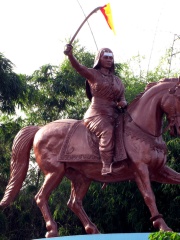
10. Kittur Chennamma (1778 - 1829)
With an HPI of 59.42, Kittur Chennamma is the 10th most famous Indian Social Activist. Her biography has been translated into 18 different languages.
Kittur Chennamma (23 October 1778 – 21 February 1829) was the Indian Queen of Kittur, a former princely state in present-day Karnataka. She led an armed resistance against the British East India Company, in defiance of the Paramountcy, in an attempt to retain control over her dominion. She defeated the Company in the first revolt, but died as a prisoner of war after the second rebellion. As one of the first and few female rulers to lead kittur forces against British colonisation, she continues to be remembered as a folk hero in Karnataka, she is also an important symbol of the Indian independence movement.
Pantheon has 50 people classified as social activists born between 1778 and 2000. Of these 50, 11 (22.00%) of them are still alive today. The most famous living social activists include Kailash Satyarthi, Vandana Shiva, and Anna Hazare. The most famous deceased social activists include Mahatma Gandhi, Bal Gangadhar Tilak, and Lal Bahadur Shastri. As of April 2022, 11 new social activists have been added to Pantheon including Khudiram Bose, Mahadev Govind Ranade, and Bhikaiji Cama.
Living Social Activists
Go to all Rankings
Kailash Satyarthi
1954 - Present
HPI: 57.47
Vandana Shiva
1952 - Present
HPI: 56.42
Anna Hazare
1937 - Present
HPI: 54.79
Medha Patkar
1954 - Present
HPI: 45.55
Rajmohan Gandhi
1935 - Present
HPI: 38.24
Jadav Payeng
1963 - Present
HPI: 37.74
Irom Chanu Sharmila
1972 - Present
HPI: 31.56
Manasi Pradhan
1962 - Present
HPI: 29.26
Sunitha Krishnan
1972 - Present
HPI: 22.52
Saalumarada Thimmakka
2000 - Present
HPI: 22.17
Laxmi Agarwal
1990 - Present
HPI: 21.56

Deceased Social Activists
Go to all Rankings
Mahatma Gandhi
1869 - 1948
HPI: 88.49
Bal Gangadhar Tilak
1856 - 1920
HPI: 66.89
Lal Bahadur Shastri
1904 - 1966
HPI: 65.45
Kasturba Gandhi
1869 - 1944
HPI: 65.21
Gerald Durrell
1925 - 1995
HPI: 63.42
Syed Ahmad Khan
1817 - 1898
HPI: 62.64
Gopal Krishna Gokhale
1866 - 1915
HPI: 61.66
Vinoba Bhave
1895 - 1982
HPI: 61.33
Mangal Pandey
1827 - 1857
HPI: 60.39
Kittur Chennamma
1778 - 1829
HPI: 59.42
C. Rajagopalachari
1878 - 1972
HPI: 56.38
Jayaprakash Narayan
1902 - 1979
HPI: 56.01

Newly Added Social Activists (2022)
Go to all Rankings
Khudiram Bose
1889 - 1908
HPI: 54.02
Mahadev Govind Ranade
1842 - 1901
HPI: 53.80
Bhikaiji Cama
1861 - 1936
HPI: 52.27
Ram Manohar Lohia
1910 - 1967
HPI: 51.17
Har Dayal
1884 - 1939
HPI: 47.33
Manilal Gandhi
1892 - 1956
HPI: 44.82
Jamnalal Bajaj
1889 - 1942
HPI: 41.56
Rajmohan Gandhi
1935 - Present
HPI: 38.24
Stan Swamy
1937 - 2021
HPI: 36.95
Manasi Pradhan
1962 - Present
HPI: 29.26
Saalumarada Thimmakka
2000 - Present
HPI: 22.17

Which Social Activists were alive at the same time? This visualization shows the lifespans of the 25 most globally memorable Social Activists since 1700.

